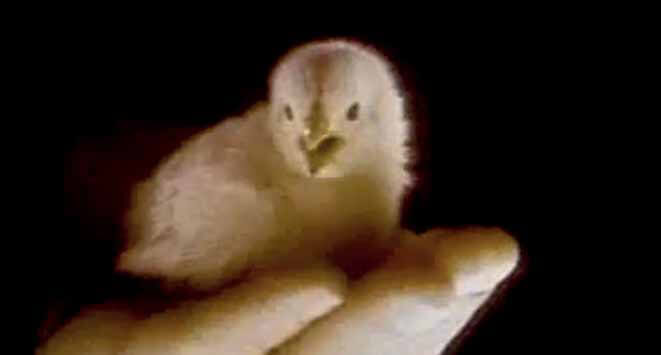Bravely out of fashion
If you are a marketer, it is virtually certain that you will have been encouraged by your agency, at some point, to “be brave”. The intention is to stiffen your resolve to defend – to your peers, sales teams and more lily-livered colleagues – what the agency promises will be “breakthrough creative work”.
Perversely, the first time courage will be called upon is likely to be when huddled with the agency itself, in one of those “let’s be open” sessions to discuss the kind of work you feel is right for your business problem.
Why the uneasy feeling? It’s not that the agency team will be anything other than polite in this professional exchange of views; it knows on which side its bread is buttered. There will not be bombast or put-downs. But you are only too aware that agencies can make you feel, let’s say, uncomfortable – silly, even – when you offer advice that goes against the prevailing creative winds.
Suppose, for example, you believe that a demonstration commercial would be the most effective way of communicating your brand superiority in the current market environment. The agency will not let its revulsion show; no-one will actually say: “But demos went out of vogue about halfway through the last century.” Instead, the team will guide you away from the “transactional” level and extol the virtues of laddering up from attributes through benefits to “meaning”.
Or perhaps you wish for two different sales points to be carried in the spot – because, while competitor brands can do one or the other, only yours offers both. This will be met with a wise nod, a sigh and a seemingly reasoned metaphor: if you were to be thrown an orange, you’d catch it – but multiple oranges you’d drop. The discussion would progress from there to choosing not one sales message but none – to rise above “selling” altogether.
Courage. You’ll need it, because the approach the agency will eventually propose is likely to be the fashionable one, where 50 seconds of precious airtime pass and no-one knows yet even what category the brand is in. Life’s big themes will be up there – freedom, humanity, personal growth, love – whether you make fish fingers or stain remover.
So you will join the ranks of John Lewis, Lloyds Bank, Nationwide, Ariel, Persil, Barbie, Gillette Venus, Microsoft Office, Lean Cuisine and Halfords with your very own “mini emotional epic”. In fact, given the length of the social media versions these days, not always so “mini”.
 No firm evidence will be shown to prove this makes business sense. It is the natural outcome of the planning fetish for laddering and the deep conservatism of creative teams – who will gladly push the current vernacular to its limits but would rather die than switch to another that is deemed “not done”. Right now, the emotional epic is in – just as hyperbole was in the early 2000s and laddish humour was before that.
No firm evidence will be shown to prove this makes business sense. It is the natural outcome of the planning fetish for laddering and the deep conservatism of creative teams – who will gladly push the current vernacular to its limits but would rather die than switch to another that is deemed “not done”. Right now, the emotional epic is in – just as hyperbole was in the early 2000s and laddish humour was before that.
As with all fashions, some wear it well – especially the cool ones, like John Lewis, who got there first. But there are always fashion victims, like Nationwide with that sickening scarf story. (Marketer to team when first shown the script: “No, I said ‘mortgage’, not ‘mawkish’.”)
So, yes, be brave. Why should you feel uncomfortable? You have a right to lobby for the kind of work you believe is required for your business situation even if it is the communications equivalent of Cuban heels. But you’ll need more than persuasion to get the agency to think outside the currently accepted canons of taste; you’ll need a little inspirational stimulus up your sleeve.
If you really believe a demo makes sense, take in the greatest demonstration commercial ever made, for Union Carbide in 1967 (see panel). If you need to make two or more sales points, take in the 1996 Co-operative Bank spot, where routine product features were juxtaposed with scenes of violence to communicate both service parity and ethical difference, no oranges dropped.
Make the observation that both of these films succeed in evoking emotions even as they focus unremittingly on factual product superiority.
Because here’s the point: the person we’re all asking to be brave is the consumer. We want them to switch from a brand they are familiar with to one they might not know so well. That’s a risk. They might just need some good reasons to take it.
The Union Carbide “Chick” demonstration commercial took the genre to its limits when first unveiled in 1967. To emphasise the effectiveness of its new “super insulation”, a live chick is placed in a small insulated box, which is then lowered by tongs into a glass beaker of boiling water.
During a single two-minute take, the camera moves in slowly on the set-up of the flames, the bubbling water and the submerged box, while a matter-of-fact voiceover delivery of product facts serves to heighten the tension.
After what seems an interminable wait, the tongs are lowered in again, the box is taken out and opened to reveal an unharmed chick. The voiceover concludes: “If you don’t believe it’s as good as we say it is… watch the birdie.”
